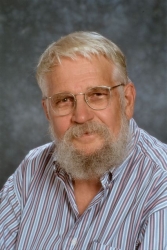One of the fathers of the theory of 'color' of elementary particles gives a lecture at the Institute of Corpuscular Physics
Professor of the University of Bern (Switzerland ) Heinrich Leutwyler proposed together with the Nobel Murray Gell-Mann the mechanism that holds the nucleus of the atom.
Elementary particles have 'color'. This property, which has nothing to do with visual perception, refers to a type of force that manifests itself at very short distances: the strong force, which keeps the core of the atom together and provide the stability needed to form larger structures, including cells and humans. This property of elementary particles was introduced in 1973 by a group of theoretical physicists among the Swiss Heinrich Leutwyler who will offer a conference on the development of models of particle physics at the Institute of Corpuscular Physics (IFIC, CSIC-UV). It will be on Wednesday, May 14, in the Auditorium of the Science Park of the University of Valencia.
Heinrich Leutwyler was, together with Harald Fritzsch and Murray Gell-Mann (the latter, Nobel Prize in Physics in 1969 for his work for the classification of elementary particles), one of the first to introduce the concept of 'color charge' in Quantum Chromodynamics (QCD). This theory describes the strong force, one of the four fundamental forces of nature that allows the atomic nucleus to stick together. Chromodynamics comes from the Greek word chroma meaning 'color'.
Leutwyler is professor emeritus of the University of Bern since 2000, when he received the Humboldt Award of the Alexander von Humboldt Foundation for internationally renowned scientists. Doctor honoris causa by the University of Mainz and Pomeranchuk Prize 2011, has developed his research career in some of the major particle physics laboratories in the world, including CERN and the University of Princeton. His lecture will trace a path through the different models of elementary particles from the Bohr model to the successful Standard Model of particle physics, the key piece, the Higgs boson that was discovered at CERN just two years ago.




















